There are many different species of fish to hunt in Hawaii. Hawaii has the highest rate of endemic fish in the world with 30% of fish species found only here in the world. When spearfishing Big Island it’s important to know your fish, their behavior, and how to hunt them is a huge part of becoming a successful spearfisherman. The first thing a new spearo should get is the book Ultimate Guide Hawaiian Reef Fishes by John Hoover. This books covers most of the fish you will see while out in the water.
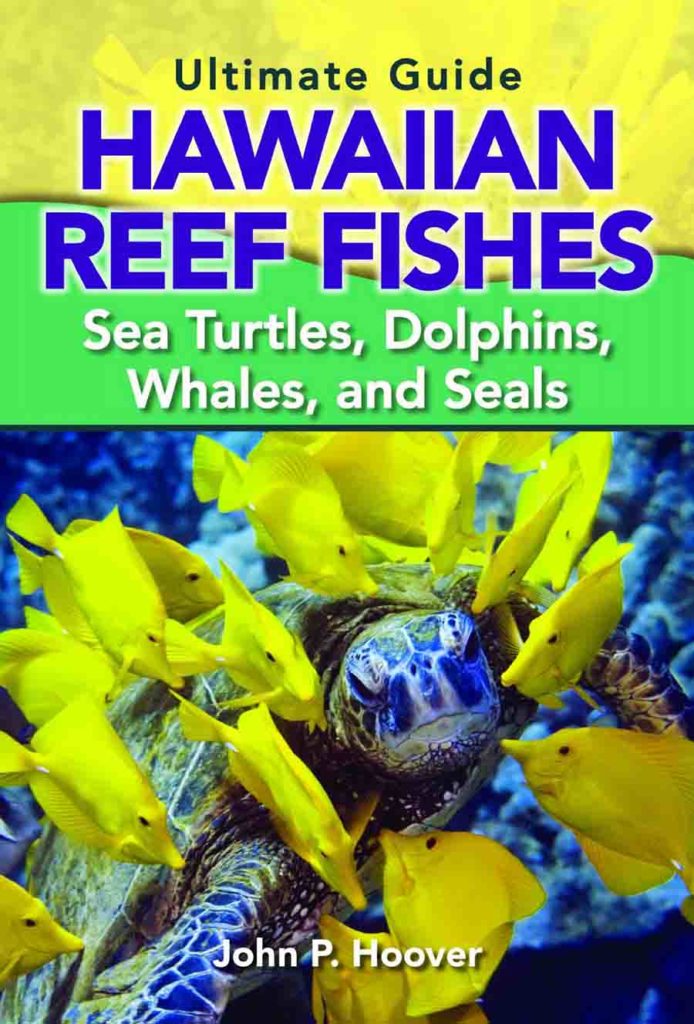
Are you looking for places where you can spearfish Big Island? Check out our guide.
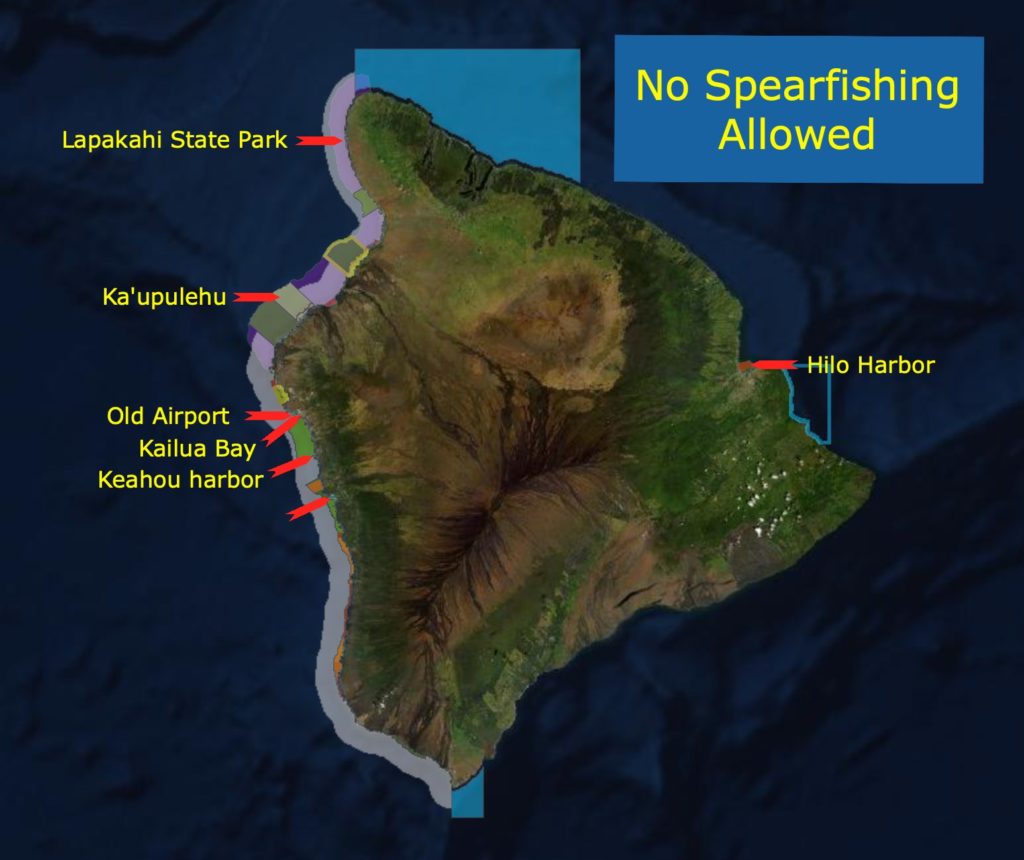
In this guide we cover:
- Hunting Herbivores
- Hunting Predators
- Size Limits
- Take Spearfishing Course
- About Ciguatera
- About Fish Stringers
- Fishing FAQ’s
Spearfishing Predators versus Herbivores
The motivations of the prey you are hunting is one of the first things to take into account when hunting your prey. Keep in mind a fish that is programmed to hunt will behave differently than a fish that it programmed to eat algae and hide from predators.
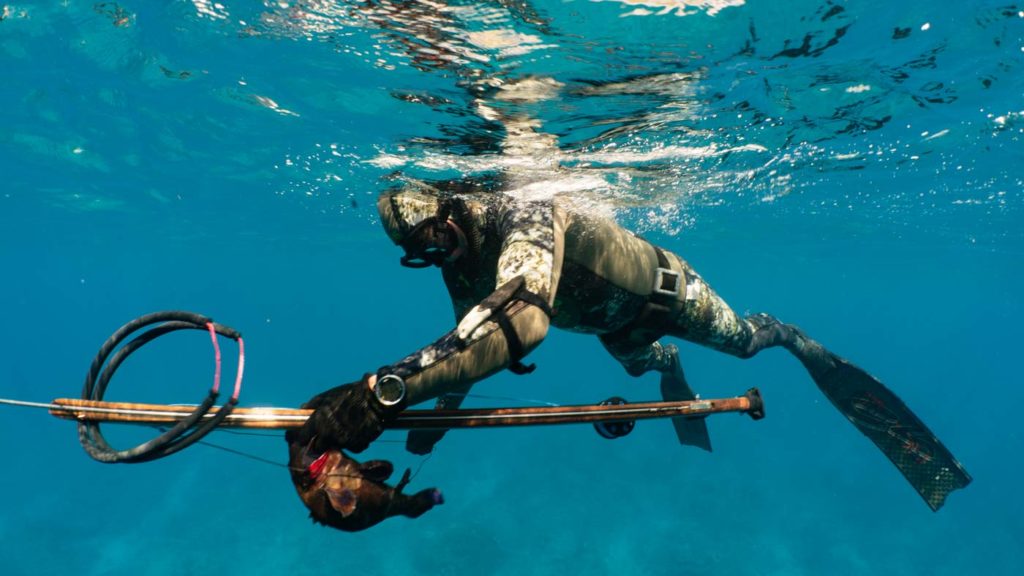
Hunting Herbivores
When hunting herbivores its important to note that these fish are used to being chased or eaten and will always be wary of predators (you).
Do’s:
- Have a good bottom time
- Be Patient
- Know their food source
Don’ts:
- Chase
- Shoot them in the guts (makes the meat taste bad)
Here are some of the best herbivores to hunt for new spearfishermen:
- Parrotfish (Uhu)
- Surgeonfish
- Convict Tang (Manini)
- Bluespine Unicorn (Kala)
- Sleek unicorn (Opelu Kala)
- Eye Stripe (Palani)
- Ringtail (Pualu)
- Wrasses
- Ringtail Wrasse (Po’ou)
- Hawaiian Hogfish aka Table Boss (A’awa)
- Triggerfish
- Black Durgon (Humuhumu ‘ele ‘ele)
- Chubs
- 3 Kinds (Nenue)
Hunting Predators
Do’s:
- Call them in with sound
- Chum
- Use Flashers
- Know their habitat
Dont’s:
- Chase
Here are some of the best predator fish to hunt for new spearfishermen:
- Peacock Grouper (Roi)
- Bluefin Trevally (Omilu)
- Blueline Snapper (Ta’ape)
- Black Tail Snapper (To’au)
- Soldierfish (Menpache)
- Long Jaw Squirrelfish (Ala’ihi)
- Goatfish
Size Limits for Spearfishing Hawaiian Reef Fish
All of the fish below have size and bag limits. If they are not listed below they do not have limits or are not included on our list of fish for new spear fishermen. For the complete list visit DAR’s website.








Take a Spearfishing Course
There’s so much to spearfishing Hawaii. Learn the tricks of the trade in our 2 day spearfishing course. We cover all aspects of spearfishing from safety, to hunting techniques, to prey selection.
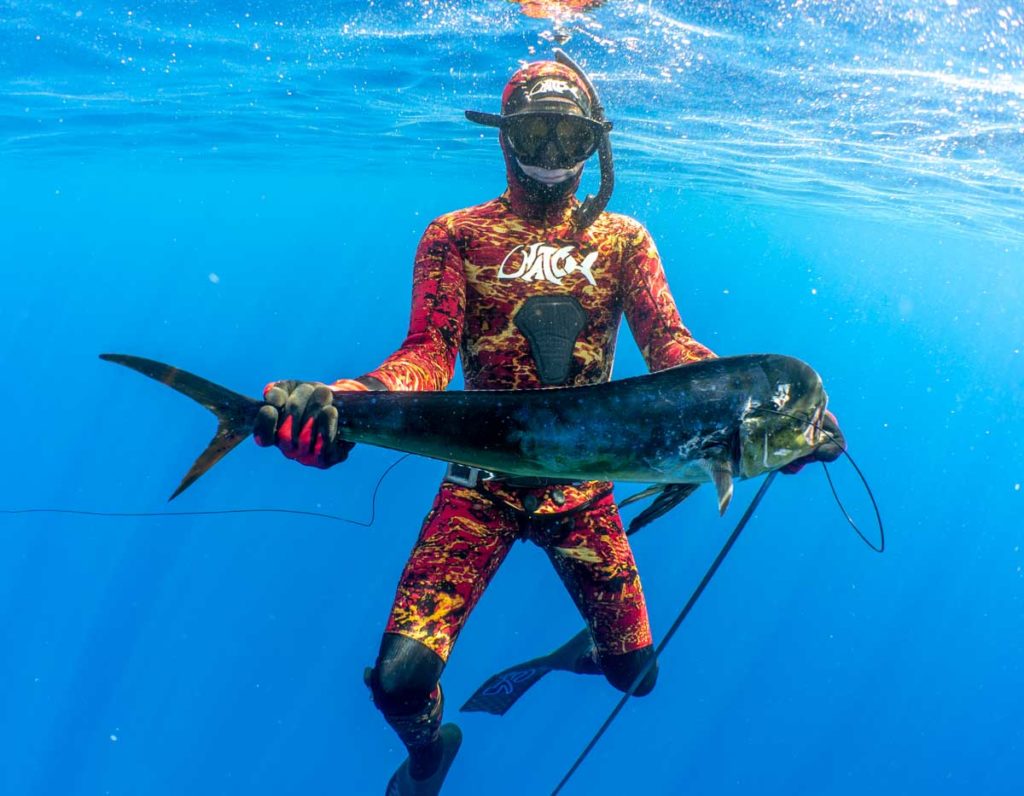
What to Know About Ciguatera
Cigratera is a toxin that accumulates in reef fish. It comes from a fish eating algae and it becomes more concentrated in predators who consume reef fish. It is not easily detectable. This mini ciguatera guide covers treatment, and avoidance.
Ciguatera FAQ
Is there a treatment for Ciguatera?
There is no known cure for ciguatera poisoning
How do I avoid getting ciguatera?
Avoid eating reef fish. If you choose to eat reef fish avoid eating their guts and brain as that is where it is most concentrated.
Which fish are most likely to carry ciguatera?
Barracudas, groupers, jacks, moray eels, snappers, parrotfish, and surgeonfish all have the potential to carry ciguatoxin.
The five most common fish associated with Ciguatera food poisoning:
- Jacks (Ulua, Kahala, Papio)
- Surgeonfish (Kole)
- Groupers (roi or hapu’u)
- Snappers (lehi, onaga, taape, waha-nui)
- Wrasses
What are the symptoms of ciguatera food poisoning?
Symptoms of ciguatera food poisoning include:
- Gastrointestinal effects
- diarrhea
- abdominal pain
- nausea
- vomiting
- Neurological effects
- Tingling or sharp pain in hands and legs
- Aches and pains
- Numbness
- Burning sensation caused by exposure to cold temperature
- Fatigue
- Itchy skin
- Coma (rare)
Can I die from ciguatera poisoning? The short answer is yes. However, it is extremely rare and has only happened in cases where the head and guts of the fish were consumed.
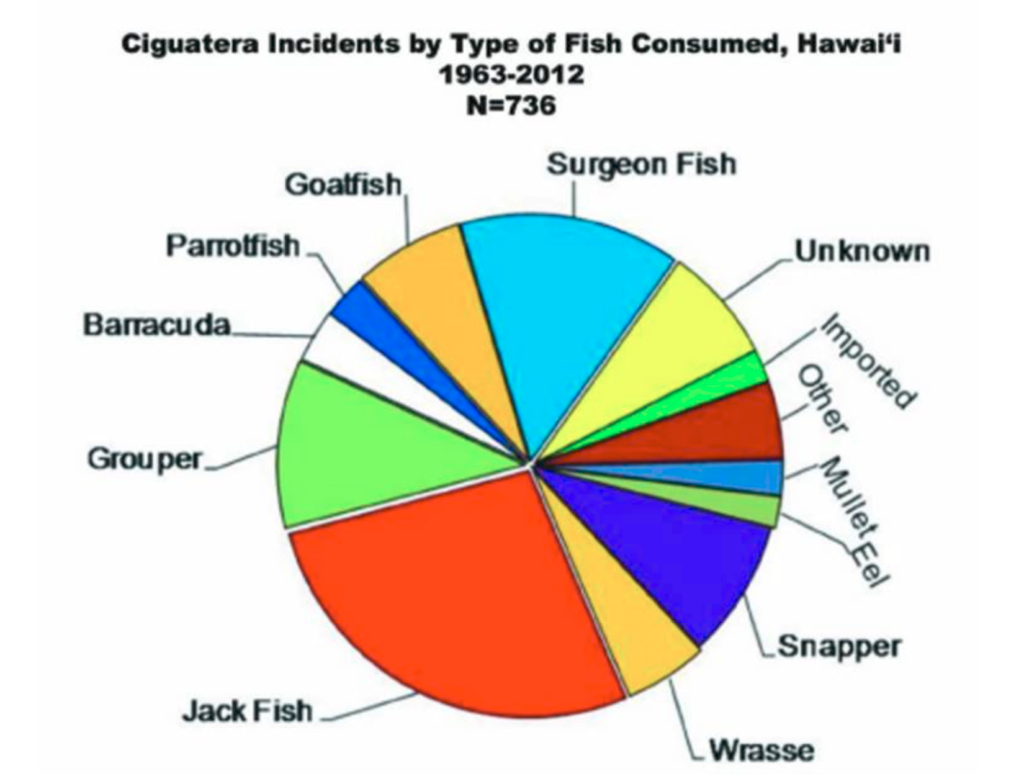
For more detailed information check out this research study
How to Use a Fish Stringer
Are you new to spearfishing Big Island or Hawaii? If so here’s a quick how to for using a ‘Kui’ or Hawaiian style fish stringer. Watch the video below to learn how to use a fish stringer.
Reasons for Using a Fish Stringer
- Allows you to carry more fish
- Keeps your catch off of your body
- Keeps hungry predators away from you
- More streamlined than a mesh bag
Spearfishing Big Island with Kona Freedivers
There is much to know about spearfishing big island. Fortunately Kona Freedivers has your back. Our spearfishing pro’s know how to set up your gear, and can advise you on how best to get started. We teach freediving courses, sell freediving and spearfishing gear, and offer service for computers, fins, and custom fitted freediving wetsuits.
When it comes to learning about spearfishing there’s no substitute for water time but often new spearos should have a bit of information to help get them started and avoid having to learn the hard way. Do you have questions? We have answers. We’ve heard it all so don’t hesitate to give us a call or come by the shop. We offer free tip sharpening and are happy to help you get your gear dialed so you can get the most for your money. Sometimes it comes down to using your spearfishing gear properly. This means getting educated about technique and maintenance. Stop by the shop and pick up our spearfishing guide for new spearos. This guide details maintenance, transport, and how to safely use a speargun. It also has links to our webpages containing a wealth of information for new spearfishermen. Did you buy a used speargun and are looking to get into the sport? In that case bring your speargun by and we would be happy to take a look at it to make sure it’s good to go and give you a guide for using the weapon safely and effectively.
Once you catch the fish you will need to prepare it. Kona Freedivers offers gear like filet knives and scales to handle your quarry once on shore. Catching the fish is one thing but then you need to get it home and prepare it for the table! Keep in mind the first time you go spearfishing Big Island you might find it challenging to get that first fish. Don’t be discouraged! This is completely normal. If you’re finding it challenging to maintain the bottom time necessary to draw the fish in consider taking a freediving course. Spearos that take our freediving course find that they are having more success in their hunting immediately after having taken the course. There are many great places you should consider when spearfishing Hawaii. Keep in mind that it’s important to know where NOT to spearfish on the Big Island. Check out our guide for insights on where you can and can’t spearfish in Kona or elsewhere on the island. There are many options when spearfishing Big Island. You can hunt the reefs or the pelagic. These two environments require different gear setups to be successful. We can show you the best way to set your speargun up for reef hunting and blue water hunting. It’s important to have an idea of what your prey is and have the proper setup for that type of fish. When shooting big fish on the reef it’s a good idea to have a reel. The allows you to shoot the fish and safely go to the surface without having the fight your quarry on the way up. It also means less chance of loosing your gun. For Bluewater spearfishing you’re going to want a break-away rig. This allows the fish to run without losing your gun in the process.
If you have questions about spearfishing Big Island or which fish to shoot or how to find and hunt a specific fish species come by the shop and we’ll be happy to talk story with you. You can also see our products online.
Frequently Asked Questions
Can Tourists fish in Hawaii?
Yes, but a permit is required for non-residents. You can find more info here.
Can you fish for free in Hawaii?
Hawaiian residents can fish for free. Non-residents can select the permit that best fits their needs here.
Can you spearfish at night in Hawaii?
Yes
Can you catch lobster in Hawaii?
Yes. Only with your hands and on months with an ‘r’. September – April. Make sure to know what size males are legal. Females are no-take. Here are the up to date rules and regs regarding lobster and crabs.
Can you spear sharks in Hawaii?
Not only is it illegal, it is culturally frowned upon as sharks were considered ‘aumakua, or manifestations of an ancestor’s spirit, in Hawaiian culture.
Is it illegal to catch octopus in Hawaii?
It is legal to catch octopus in Hawaii. Minimum size is 1 pound (click for the latest info).
